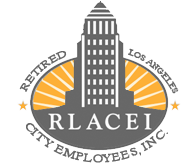
LACERS BOARD UPDATE
By Michael R. Wilkinson, LACERS Commissioner
Email: MikeWilkinson4LACERS@gmail.com
Well, it’s that time again. No, not time for New Year’s resolutions; it is time for the new actuarial valuation. Exciting stuff!
Our actuarial value is up and our unfunded liability (the amount that we are below 100 percent funding) is down. That’s good news!
This is due to several factors: strong investment returns, lower than projected salary increases for active members, and better than anticipated health costs made a positive impact. More members retiring offset these gains resulting in lower member contributions than predicted.
There are two ways to look at LACERS actuarial health. The first is called the actuarial value of assets and liabilities. The actuarial value calculation involves “smoothing” or deferring part of each year’’s investment gains or losses for recognition in future years. Smoothing cushions the plan against significant short-term fluctuations in annual investment earnings. This calculated value is the one used to set the funding for the plan and the contribution rate that must be paid by the City. The other is the market value of assets. This is simply the value of LACERS’ investment portfolio before any smoothing.
The funded ratio pairs the value of LACERS investments with its liabilities (the cost to provide the benefits and administer the plan). For LACERS’ fiscal year ending June 30, 2021, the actuarial value of the retirement benefits had increased by 2.2 percent to 71.6 percent, while the actuarial value of health benefits was 94.6 percent, resulting in a nine percent increase from the prior fiscal year’s study.
On a market value basis, the retirement benefits funded ratio was 81.3 percent (up 15 percent), whereas the health benefits funded ratio was 107.4 percent, a 25.6 percent increase from the last fiscal year’s measurement.
Okay, what does all this mean and what will change? As we discussed in previous articles, the plan is funded from just three sources: employee contributions, investment returns and City contributions. The actuarial valuation determines how much the City needs to contribute to keep the plan sound. Note that the City has always paid 100 percent of its required contributions, unlike some plans across the country that are in dire financial straits.
This year the required health contribution from the City went down by 0.37 percent while the retirement contribution rate went up 1.43 percent for a combined 1.06 percent increase, resulting in a total of 33.31 percent of the City payroll.
Why, may you ask, did the overall rate go up with all the good financial news this year? Well, the biggest factor was that the City had a lower payroll largely because of all of the early retirements, which required a higher percentage of payroll to make up the difference. However, the total amount paid by the City with the higher percentage combined with the lower payroll (because of fewer employees) will be about the same












